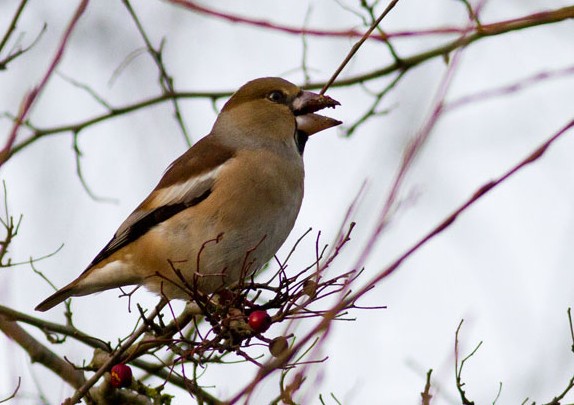Nature Notes – Nov 2025
Making the most of the mast
Mast is a collective noun for fruits, nuts, seeds and berries. You have probably noticed or heard people commenting about a super-abundance this autumn including apples, brambles, sloes and acorns.
Why is 2025 so ‘blessed’? Why do mast years occur? The answer (as ever) lies in the soil, but also in the weather. A warm, wet spring and a hot summer have combined to produce a long season of blossom/pollination followed by unusually high temperatures and drought. This stresses trees and bushes. They have to work over-hard, finding water from deep in the ground. As a reaction to stress, plants produce as much fruit as possible. If there is more fruit than can be eaten, the greater the chance that some seeds will germinate. This survival mechanism is a natural reaction. As far as we know, trees are not smart enough to work this out for themselves!
A bountiful year
On a short walk from home I can see surplus apples and ransomes (wild damsons) on the ground, alongside acorns sufficient to resemble brown gravel. Under the horse chestnut trees there are more ‘conkers’ than small boys used to dream about. My hawthorn and berberis are red with berries and these will be followed by black fruits on the ivy.
Keep an eye on this natural bounty over the next few months. Acorns will be a treat for the local squirrels and may attract jays, even if these are not usually common where you live. Rotting apples and hedgerow berries will be devoured by thrushes. Our resident species will be joined by redwings and fieldfares, arriving from Scandinavia to avoid ice and deep snow in the places where they breed.
If you are fortunate to have the following trees in your area, beech nuts are a favourite food of bramblings from Eastern Europe, and hornbeams (not common locally) attract hawfinches. These large, brightly-plumaged finches have a specially adapted bill and neck muscles and can crack open cherry stones. This is a relatively scarce and shy species. To see them it is often necessary to make a special trip to a known wintering site.

If you are out looking for any of these exotic visitors this Winter you are likely to find them in mixed flocks with more common species such as chaffinch, greenfinch, reed bunting and yellowhammer.
I hope you get to enjoy watching birds and mammals that are making the most of the mast this autumn and winter.
David Scott




 Macmillan Coffee Morning – Nov ’25
Macmillan Coffee Morning – Nov ’25

